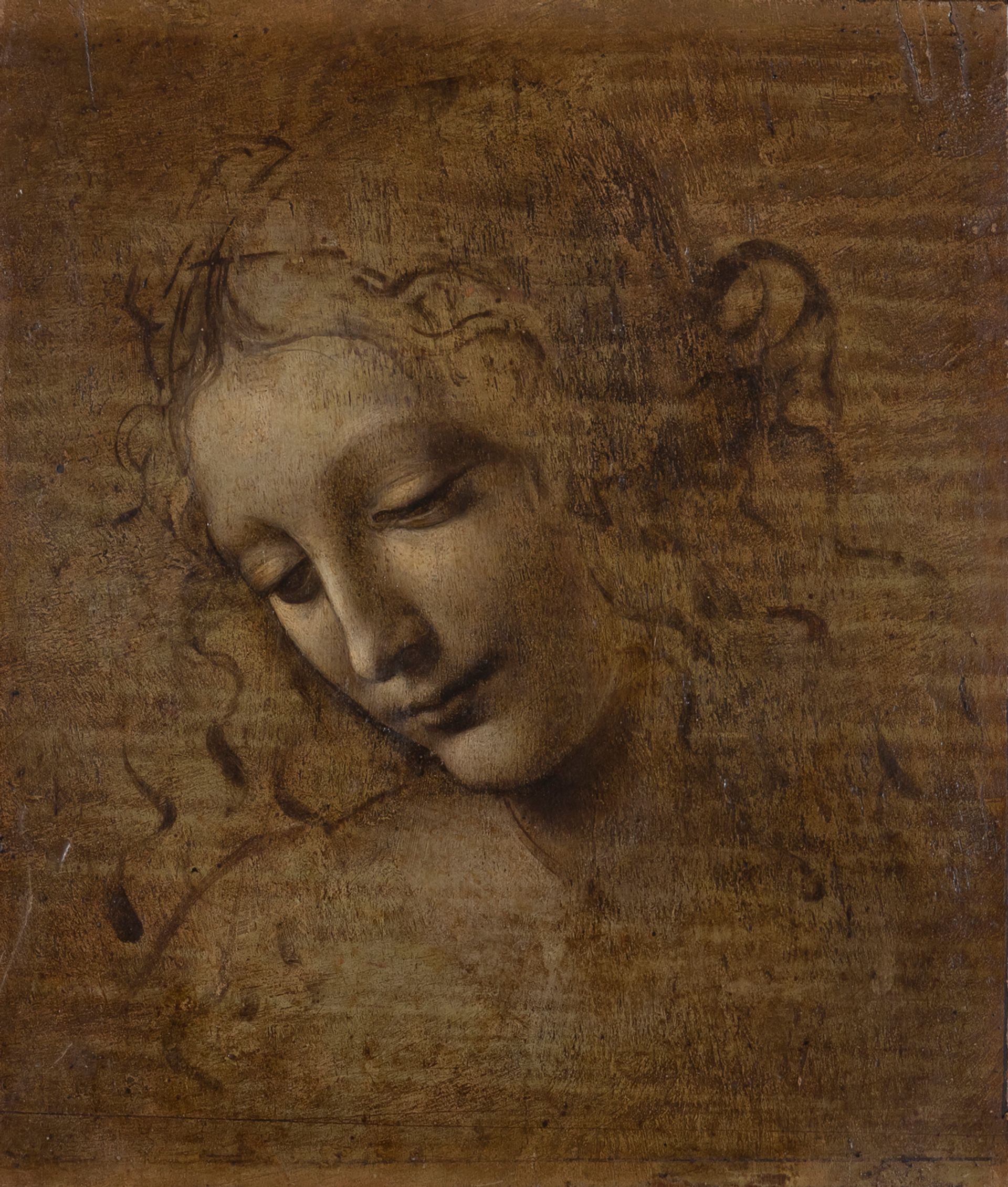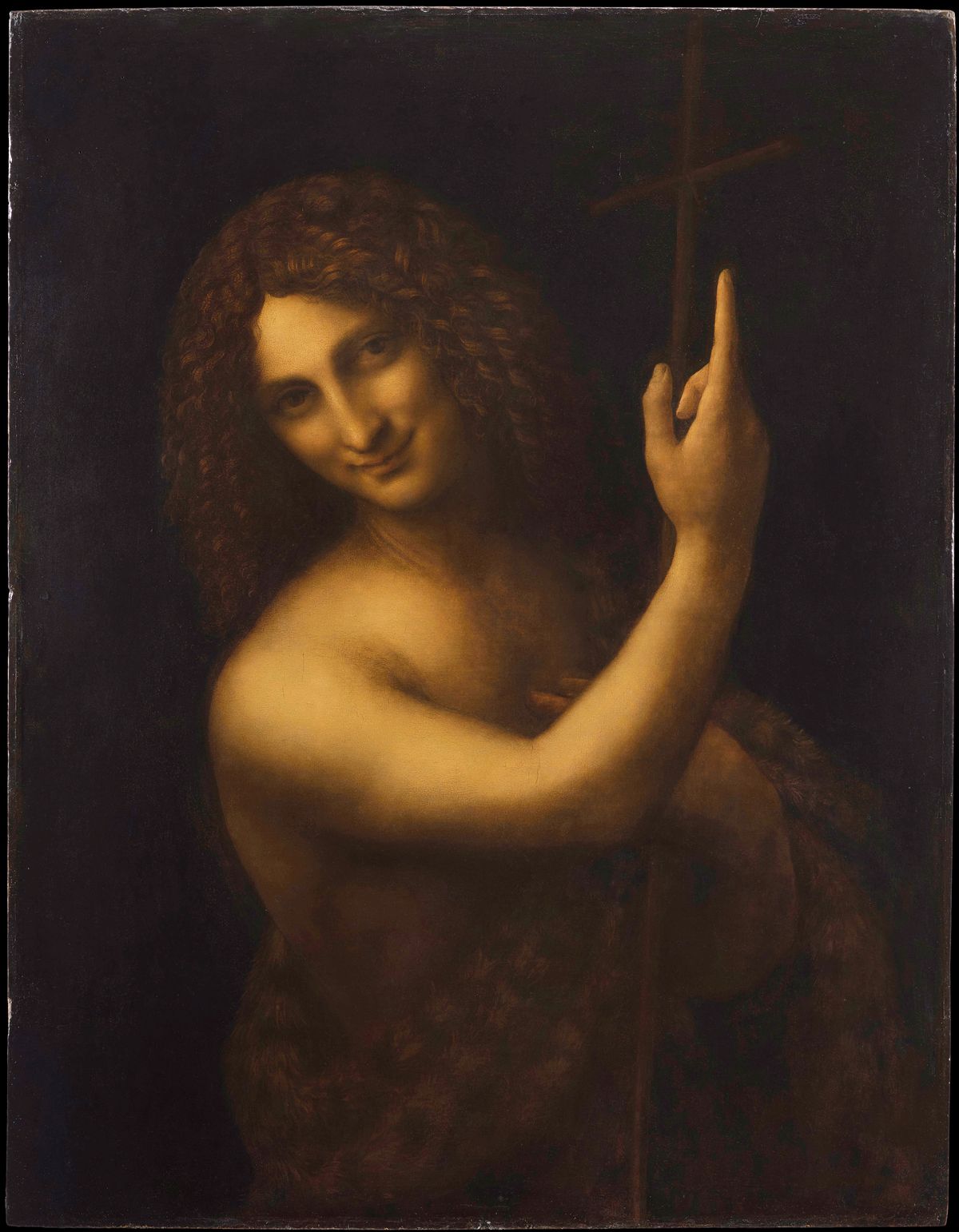The event of the autumn—the Musée du Louvre’s Leonardo exhibition to mark the 500th anniversary of the artist's death in France—promises to be a very different exhibition to the parade of “greatest hits” we have come to expect of big monographic shows. Some might say the Louvre had little choice but to take a different approach, given the scarcity of autograph paintings by Leonardo (most outside specialists would say 15 to 17) and the complexity of the negotiations around securing loans. “We knew it was going to be difficult,” the exhibition’s curators Vincent Delieuvin (department of paintings) and Louis Frank (department of prints and drawings) tell The Art Newspaper.
“Even when people ask us for Leonardo loans, we [start from the position] that we won’t lend the Mona Lisa, The Virgin of the Rocks or the St Anne. And [the portrait of] Isabella D’Este can’t travel,” Delieuvin says. “This is probably one of the most difficult subjects for an exhibition here, but we are not disappointed by the difficulty we found.”
“We have five paintings [in the collection] and, at the end, many colleagues were very generous with us because they know we are able to present and study [Leonardo] in a good way,” Delieuvin says. Four of the museum’s five paintings—The Virgin of the Rocks, La Belle Ferronnière, Saint John the Baptist and Saint Anne—will be in the exhibition, while the Mona Lisa will remain in the gallery where it is normally displayed.
“I think it will be a very impressive selection. Britain, ironically in this moment of Brexit, is the most important lender,” Delieuvin says. As a result, “one of several star moments” will be the chance to compare the National Gallery’s large-scale Cartoon of the Virgin with St Anne and St John the Baptist with the Louvre’s St Anne, together with a detailed analysis of the history of the pictorial evolution and execution of this subject.

Salvator Mundi should be included in the exhibition catalogue Courtesy of Christie's Images LTD 2017
And then there has been the feverish speculation surrounding the potential star guest appearance of the Salvator Mundi. At the time of writing, The Art Newspaper understands the painting should be included in the catalogue, with a confirmed attribution and a new date, historically placing it in the same period as the St Anne and the lost work Battle of Anghiari.
We started off with no preconceptions. We didn’t care about what has been said [about da Vinci] before. We wanted to be more precise and to get close to what occurred a long time agoCurator Vincent Delieuvin (Department of Paintings), Louvre
But the genesis of the show, some ten years ago, always pointed in a different direction to the “greatest hits” approach. “We started off with no preconceptions,” Delieuvin says. “We didn’t care about what has been said before. We wanted to be more precise and to get close to what occurred a long time ago.” To begin with, Frank and Delieuvin were set on a traditional chronological approach to the show. “Our heads were too convinced by what was the classic way of writing about Leonardo. But we no longer think like that now—that Leonardo’s career is divided into distinct periods, determined by geography. For example, the idea that he changed his style on his arrival in Milan is not true.” Now the show will be divided into four chapters, illustrating the key stages of Leonardo’s artistic evolution over his career.

Head of a Woman (La Scapigliata), dated 1500-05, is an unfinished brush drawing with some pigment Licensed by Ministero dei Beni e delle Attività Culturali, Complesso Monumentale della Pilotta-Galleria Nazionale
To establish a firm historical foundation, Frank has pored exhaustively over the archive during the past ten years, and has produced a new French translation, introduction and notes to Vasari’s mid 16th-century Life of Leonardo, based on a study of the extant archival documents. This has led to the weeding out of some of the centuries’ old “fake news”, which has come to shape our understanding of Leonardo’s career and approach.
The other vital basis for the show is scientific. The Louvre has done some groundbreaking investigations of the works themselves: new types of X-rays, for instance, map each pigment and its chemical element in the paint layers and each stage of Leonardo’s execution. The exhibition will display actual-size infrareds of Leonardo’s original paintings, including those that aren’t in the show. Study days will give voice to these scientific investigations—looking, for instance, at the still unpublished mapping of the Mona Lisa. Copies have also been examined, to understand when an idea was reproduced by an assistant or a pupil, and whether Leonardo had a hand in it.

Verrocchio’s Christ and St Thomas (from Orsanmichele, lent by the Bargello Museum) was executed between 1467 and 1483, when the young Leonardo was working in Verrocchio’s studio and learning his craft Andrea del Verrocchio's Christ and St Thomas. Photo © Louis Frank
The first section of the exhibition will look at light, shadow and relief. One of the highlights will be Andrea del Verrocchio’s monumental sculpture of Christ and St Thomas (from Orsanmichele, lent by the Bargello Museum), executed between 1467 and 1483, when the young Leonardo was working in Verrocchio’s studio and learning his craft. The link to Leonardo’s six drapery studies in the Louvre will be made clear, showing how Leonardo’s manipulation of light and shade mimics the play of light over bronze surfaces. Sculpture will feature throughout the show, with a new recreation of Leonardo’s approach to modelling form, based on large-scale sculptural medallions. The Gallerie degli Uffizi Adoration of the Magi will not feature: “We didn’t ask for it,” Delieuvin says. By the end of the 1470s, the show will trace the first change in style, marked by Leonardo’s wonderful preparatory studies for two Madonnas.
The second section is devoted to liberty. At this stage, Delieuvin says, Leonardo did not regard anatomy as of prime importance. He was looking for movement, a sense of life, even if it means distorting the anatomy. Surveying the extraordinary freehand sketches of the Madonna of the Cat and the State Hermitage Museum’s Benois Madonna, this chapter will document Leonardo’s liberal changes of mind and show just how much time he needed to perfect a painting. This phase also embraces the Vatican’s St Jerome, the Louvre’s Virgin of the Rocks and some of Leonardo’s Milanese portraits.
What is 'singular and original' in Leonardo’s approach is that he had in mind his painting; he needed to understand the way things were workingCurator Vincent Delieuvin
By the end of this period, Leonardo is searching for a more scientific basis to his art—“an entire study of all nature”. The Louvre will devote the third section to science and the show will include all 14 of the Institute de France’s manuscripts, sheets from the Codex Atlanticus and the Codex Arundel from London’s British Library. The exhibition will argue, however, that scientific understanding is not an end in itself. What is “singular and original” in Leonardo’s approach, says Delieuvin, “is that he had in mind his painting; he needed to understand the way things were working”.
The fourth section will be simply called "la vie", where Leonardo brings everything vividly into play, creating several of his major masterpieces, starting with The Last Supper (the Louvre will show the 1506 Marco d’Oggiono copy, which is the closest to the original). The myth that Leonardo produced so little because he was diverted all the time by new thoughts will also be challenged; on the contrary, “execution was more important than conception”, Delieuvin says, and this will be the journey that the exhibition takes us on. It was because Leonardo spent so much time trying to improve his works as he painted them, trying to build up the sfumato—the smoky shadows, so full of ambiguity, that his works are so enigmatic and full of life. Examples will range from the preparatory Last Supper drawings from Windsor, the portrait of Isabella d’Este, infrareds of Mona Lisa linking the drawing and the painting, the Leda (shown together with antique sculpture, to reveal the extent of Leonardo’s reinvention) and the St John the Baptist.
“We have gone the distance with connoisseurship… which is intimate, subjective, after the last 120 years," Delieuvin says. “It helped a lot in the making of catalogues [of works], but today we have to go further; we need the help of more objective scientific proof to move on. We are trying to give scholars and the general public a sense of the necessity of going back to what we have," he says. “We didn’t do this exhibition as a blockbuster,” he adds.
“The divisions are personal, to show something about Leonardo’s singular artistic evolution and explain why he is such a genius.” At the end, “we will know that the reasons why there are not many Leonardo paintings is because of the way he painted”.
The Bank of America is the lead sponsor of the exhibition.
• Leonardo da Vinci, Musée du Louvre, Paris, 24 October-24 February 2020


